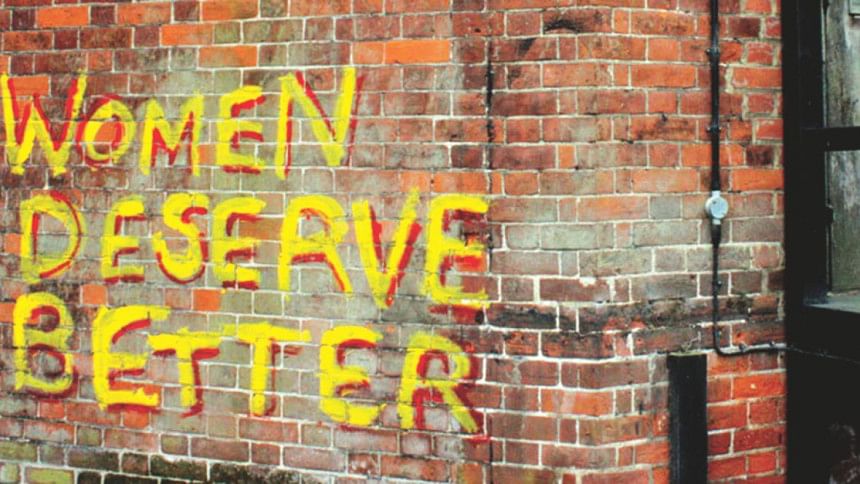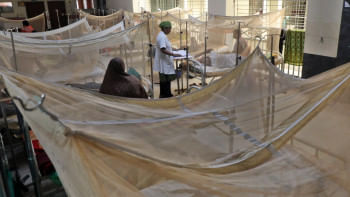She was a model

When it comes to portraying women as sexual objects, some media outlets' attitude teeters on the brink of mania. There are times it comes out in little bursts.
The recent incident of the suicide of a woman in Mirpur is a case in point. She had threatened to kill herself in a video posted on a social networking site before she actually went on carrying out the sad act. A lonely woman early in her life killing herself is indeed tragic. To begin with, suchan incident should have been reported in a more cautious manner. This is especially so when the victim is a woman and also because suicide in our society is still a taboo. There is also the issue of respecting the memories of the dead. On top of it all, through the act or taking that leap of faith, she has gone beyond the confines of our worldly affairs.
Some media outlets, especially the online-only ones, have discovered in her death a godsend to increase visitors for their website. That she was a model had made her story even more interesting for them. It seemed as though the video and her subsequent death had made the woman an object, a commodity. As good as a news product. Her personal life suddenly became an object of scrutiny. These 'newspapers', armed with quotes by some police officers, started to give detailed accounts of her supposed private life. These reports, most of them riding on the quote of that know-all sepoy or sergeant, appeared to know every person that the deceased had come across in her life or all the places that she had frequented. Not to mention the detailed, intimate descriptions of her supposed private life. Most of them are of course fictitious, yet they are duly typed and sensationally headlined for the palate of unsuspecting readers.
The kind of 'journalism', where computer screens or newsprints are daubed with trash, is not new, though. To make it sad to tragic, some mainstream, respectable newspapers are also infected with this disease of the soul. Take Oishee Rahman, a teenager who had killed her police-inspector father and homemaker mother in 2013. Long before the law enforcers disclosed the teenager's real age, her name, photo and personal details were published, and she was shown handcuffed on primetime television. Again, her gender had made her an object of close media scrutiny. It suddenly seemed to matter a lot as to with how many men she regularly visited different fast-food joints or the kind of cough syrup she had allegedly preferred to get her kicks. And it all came from the horse's mouth - police officers who had diligently supplied friendly reporters with all these 'crucial' details about the case.
Some newsroom heads appear to possess the not-so-enviable ability to transport their readers to Victorian England, where words such as allegedly, sub judice, norms, and editorial guidelines were considered alien to journalism. It can be fairly said that long before a Dhaka court had handed the girl death penalty for parricide, some newspapers and television channels have already executed the verdict for her imagined crimes through reports and comments that were at times irresponsible, shoddy and were devoid of the sense of propriety that is indispensable to running a newspaper. Media trial is a nasty business, and women are its worst victim. Thus, a woman caught with the cough syrup Phensedyl can be reported as 'Phensi Queen' or a girl in possession of methamphetamine tablets will be called 'Yaba Princess'.
The crux of the matter lies in seeing women, her body to be precise, as a commodity. This has particularly proliferated since the country's Bourgeoisie revolution of 1990 that had ousted Gen HM Ershad in a mass upsurge and restored democracy. The get-rich-quick economic system has given birth to a consumerist culture, which sees women as a product, her body, like a designer hat, has been turned into a sellable item. Even more so is her life - some news outlets think it is their right to talk about what goes on even between the sheets. That she is dead is news, that she was a model is even better for the story.
The solution, however, does not lie in regulation. History tells us that it is a matter of days, if not years, that general readers will reject outlets that pander to false news or sensationalism. Given that our society is littered with remnants of feudalism along with the presence of a crummy education system that wishes to generate only good grades, it will take our readers a little longer to reject the Phensi news outlets. However, at the end of the day media as an entity is a self-regulatory affair. Having said that, there is always room for debate, and it should be encouraged. The Press Council needs to hold regular events to sensitise reporters about gender, children and other issues of importance. News editors can hold meetings where editorial guidelines can be discussed and swapped. This is especially so in the wake of the digital revolution.
The writer is author, journalist and editor.
Twitter: @ahmedehussain;
Email: [email protected]

 For all latest news, follow The Daily Star's Google News channel.
For all latest news, follow The Daily Star's Google News channel. 



Comments